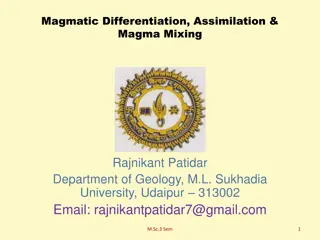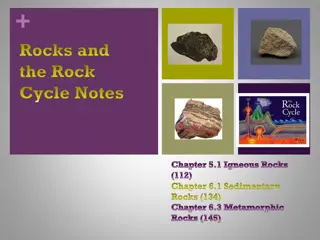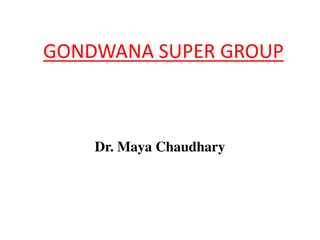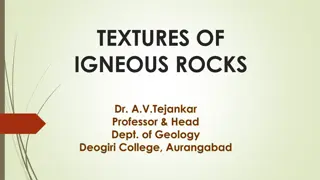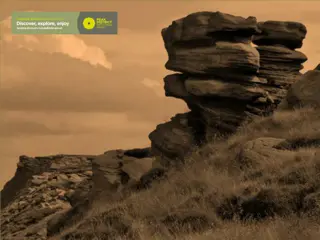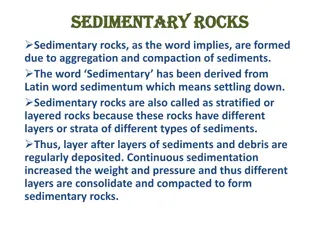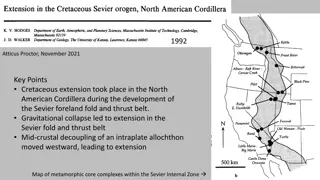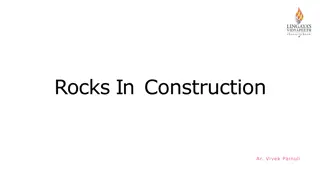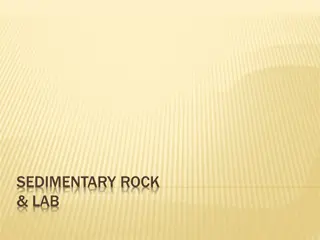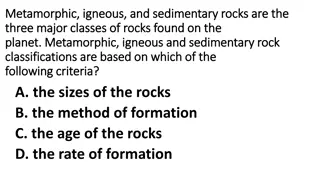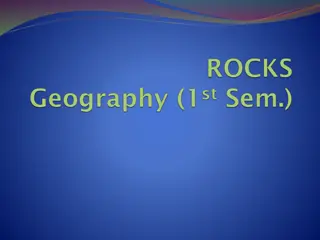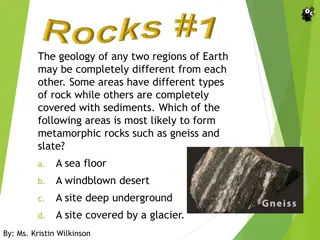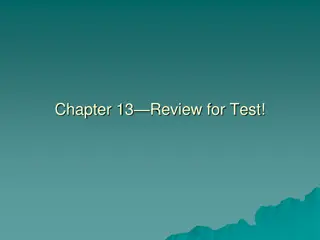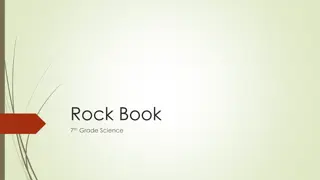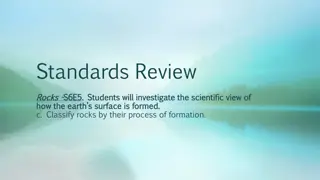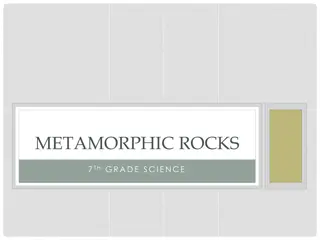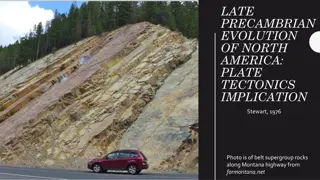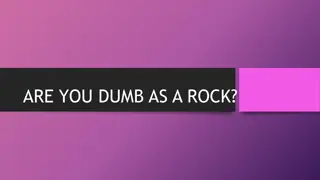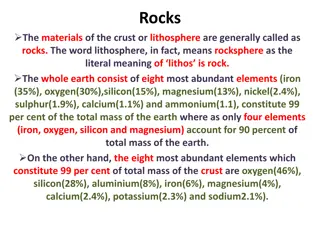Understanding Metamorphic Rocks: Foliated vs. Nonfoliated
Explore the characteristics of metamorphic rocks through identifying whether they are foliated or nonfoliated and determining their parent rocks. Learn about rocks like gneiss, marble, and slate, and understand concepts such as loose rock grains being called sediment.
Download Presentation

Please find below an Image/Link to download the presentation.
The content on the website is provided AS IS for your information and personal use only. It may not be sold, licensed, or shared on other websites without obtaining consent from the author. Download presentation by click this link. If you encounter any issues during the download, it is possible that the publisher has removed the file from their server.
E N D
Presentation Transcript
Science 8 Chapter 13 Minerals and Rocks Rocks Lesson 2
Identify the metamorphic rocks as foliated or nonfoliated. Identify the parent rock. gneiss
Identify the metamorphic rocks as foliated or nonfoliated. Identify the parent rock. gneiss foliated-----parent rock--granite
Identify the metamorphic rocks as foliated or nonfoliated. Identify the parent rock. marble
Identify the metamorphic rocks as foliated or nonfoliated. Identify the parent rock. marble nonfoliated parent rock--limestone
Identify the metamorphic rocks as foliated or nonfoliated. Identify the parent rock. slate
Identify the metamorphic rocks as foliated or nonfoliated. Identify the parent rock. slate foliated parent rock--shale
1. Loose grains of rock material are called ________________.
1. Loose grains of rock material are called sediment.
2. Which list shows the correct sequence? A. shale, foliation, basalt B. gneiss, lithification, shale C. granite, metamorphism, gneiss D. sandstone, lithification, sediment
2. Which list shows the correct sequence? A. shale, foliation, basalt B. gneiss, lithification, shale C. granite, metamorphism, gneiss D. sandstone, lithification, sediment
5. The boxes on the left describe different ways that rocks form. Write the type of rock that forms in each box on the right. Parent rocks are squeezed, heated, or exposed to hot fluids. type of rock; Rock and mineral fragments are deposited in basins, compacted, and cemented by dissolved minerals type of rock;
5. The boxes on the left describe different ways that rocks form. Write the type of rock that forms in each box on the right. Magma or lava cools and crystallizes. type of rock;
5. The boxes on the left describe different ways that rocks form. Write the type of rock that forms in each box on the right. Parent rocks are squeezed, heated, or exposed to hot fluids. type of rock; metamorphic Rock and mineral fragments are deposited in basins, compacted, and cemented by dissolved minerals type of rock;
5. The boxes on the left describe different ways that rocks form. Write the type of rock that forms in each box on the right. Parent rocks are squeezed, heated, or exposed to hot fluids. type of rock; metamorphic Rock and mineral fragments are deposited in basins, compacted, and cemented by dissolved minerals type of rock: sedimentary
5. The boxes on the left describe different ways that rocks form. Write the type of rock that forms in each box on the right. Magma or lava cools and crystallizes. type of rock; igneous


